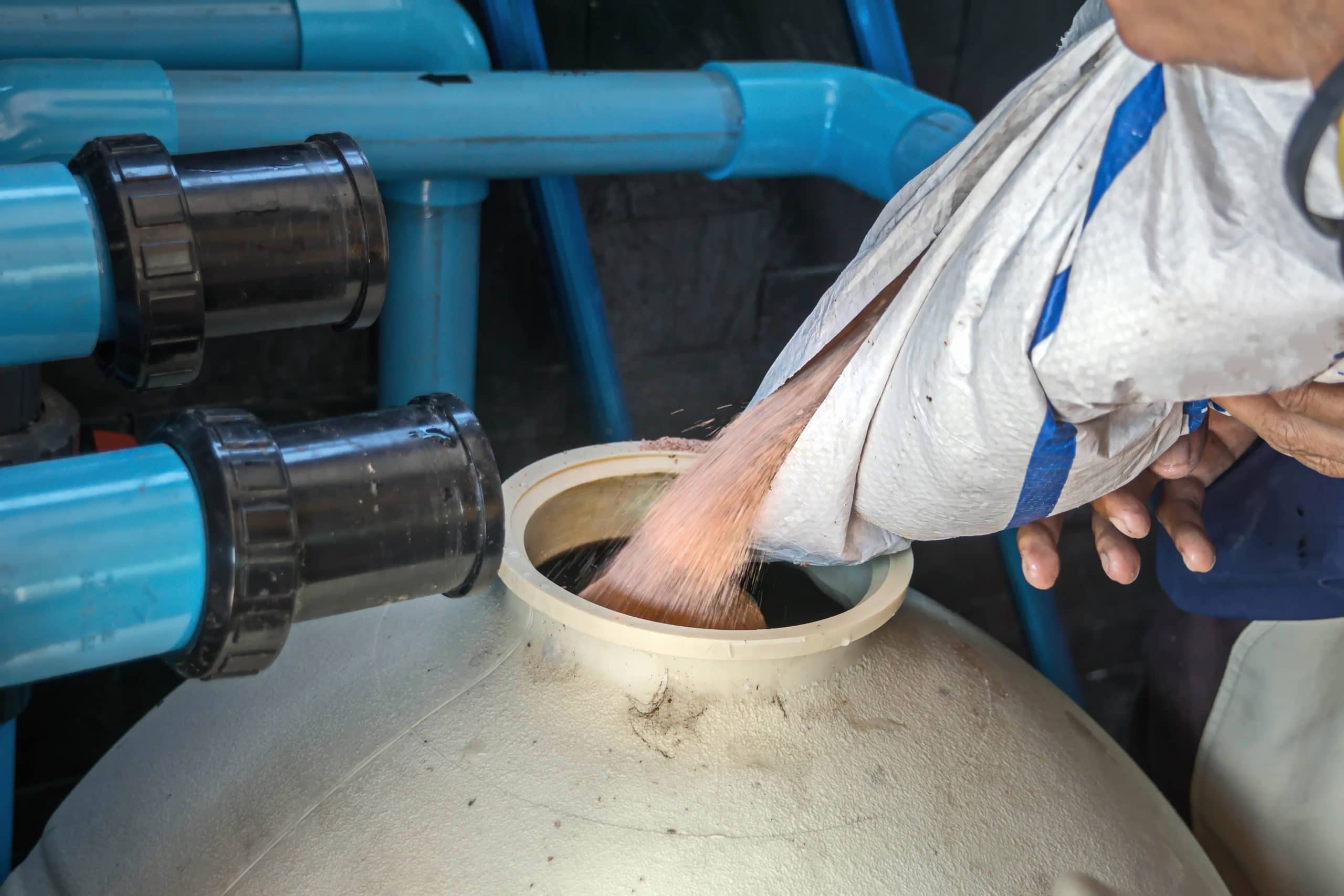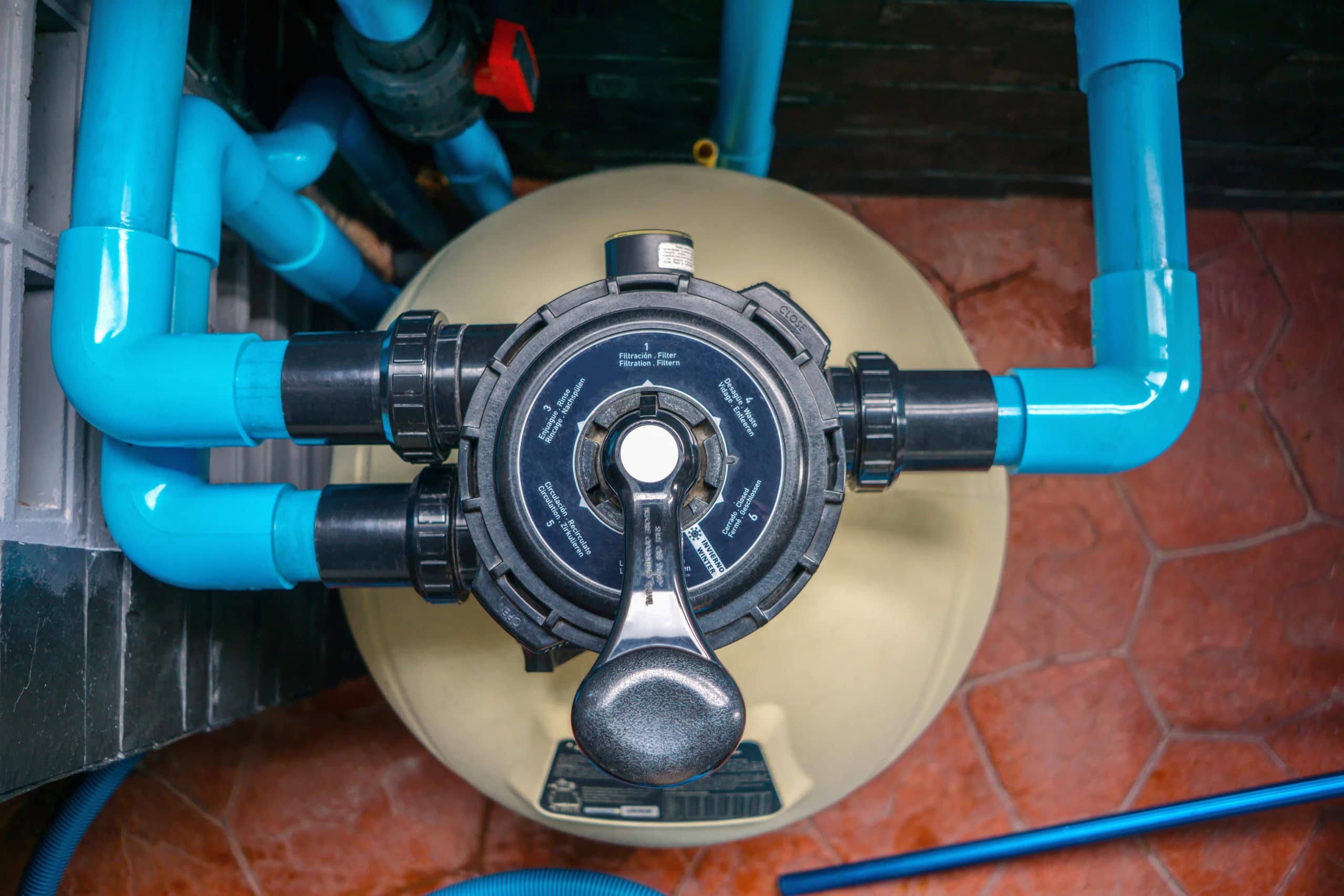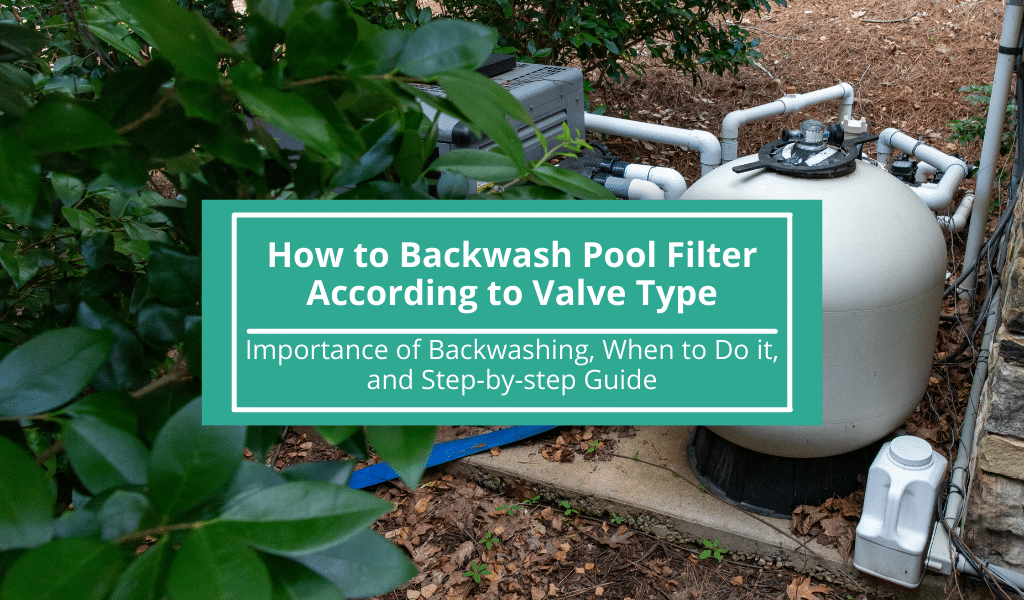Backwashing a pool filter is essential in order to have clean pool water circulating; otherwise, the leaves, dirt, and other debris can get filtered into the same circulation. Thus, the pool water cannot really be cleaned if this step of pool maintenance is skipped.
The pool's filter only serves as a storage for the unwanted elements in your pool that may get caught in the circulation. And just like a trash can, when it gets full, you need to take it out. The same principle applies to the pool filter. For it to do its job of keeping your pool blue, you need to backwash it.
Now that we've established the importance of backwashing a pool filter, it is important to know how to do it based on what valve and method works for your situation, as well as, when and how often you need to do it in order to keep your pool clean.
When to Backwash Your Pool Filter
Generally speaking, you can backwash your pool filter along with your other maintenance rounds. A good estimate would be once every 7 to 10 days. This is recommended especially if your pool is located in an area prone to different types of debris getting swept into the pool.
Filter Type
Different filter types may require different ways and frequency of backwashing. Thus, it’s important to explain the types of filters and what they mean for your pool. There are two main filters you should be aware of: sand and diatomaceous earth (also known as D.E.).

Edit your caption text here
If you happen to have a diatomaceous earth filter, you will need to replenish the diatomaceous earth, as unlike a sand filter, the diatomaceous earth is used up as the debris is trapped. As such, after backwashing the filter, you will need to add back D. E. into the system.
To do so, you will need to make a mixture of D. E. and water. After that, you should put the mixture into the pool’s skimmer, and let it disperse over time. The process should take roughly eight hours, after which your pool will be ready.
Environmental Factors
The environment also can play a factor in how often you need to backwash your pool filter. To illustrate this, let us give a brief example: if you have a pool in which there are a lot of trees, you would probably need to increase the frequency at which you backwash the pool filter. This would be because there would probably be a lot more leaves, twigs, and debris that can get caught in the swimming pool’s circulation, thus getting placed in the filter.
When NOT to Backwash Your Pool Filter
For certain problems, backwashing is not always the solution. For example, if you are dealing with a severe algae problem, backwashing may not help because the algae can easily re-enter the pool, making the process ineffective. Additionally, if there is a severe amount of dirt and debris in your pool, it might be better to drain it entirely rather than risk your filters getting overloaded and too dirty to be of clean use.
How to Backwash According to Pool Valves
Now that we have gone over why and when you need to backwash your pool filters, let us transition into the more important matter of how to backwash your pool filter.
To backwash your pool filter, you will need a backwash hose, which will be used to siphon all of the waste. Backwash hoses can be bought from most hardware stores such as Lowe’s or even off of Amazon, with prices ranging anywhere from $10 to $50.

Given that keeping your pool clean is important for health and safety purposes, and that you will be using your backwash hose on a weekly basis, you probably would not want to skimp on this purchase, as you could end up with gunk all over your lawn or even in your pool as a result of a backwash hose with leaks or holes.
Backwashing with a Multiport Valve
If your pool filter has a multiport valve, then backwashing it is quite simple.

Congratulations! You have successfully backwashed your pool filter!
Backwashing with a Push-Pull Valve
Push-pull valves are less common compared to the multiport valves, and are not used nearly as much. If you happen to have a push-pull valve, backwashing will be a walk in the park as well!
Even if they are less common, push-pull valves are not harder to backwash; in fact, most would say that push-pull valves are easier to deal with. And truthfully, push-pull valves are significantly easier to clean out.
Congratulations! You have successfully backwashed your pool filter!
Waste Disposal
Now that you have cleaned out your pool filter, you have one last task: disposing of the refuse and the contaminated water it is floating around in. What follows next is based on generalities, and as a result, the situation and rules may differ for you.
Reminder:
Before we go any further, we must stress that you check your local government’s local laws and ordinances and follow their guidelines.With that out of the way, in most cases, you are prohibited from dumping the waste and the water in the street into storm drains, as well as septic tanks, and doing so would incur significant fines, as the waste can be damaging to the systems.
As such, your best options would be to either dispose of the waste in a sanitary sewer, which was built to handle such tasks, or, simply dump the waste into your backyard, which, as an added bonus, waters and provides nutrition to the plants. No matter how you choose to dispose of the gunk, again, always ensure that you are in compliance with your local government’s laws.
Wrapping Up
In conclusion, it’s essential to be able to backwash your pool filter on a regular basis. Be sure to be able to keep up with it by establishing a maintenance routine to cover not only backwashing your pool filter, but the other things that are needed for general pool maintenance.
Additionally, be sure to understand what type of filter you have and assess the area your pool is located in order to make the best decisions of when and how to backwash your pool filter. Once you’re able to do that, it’s finally time to be able to use your pool without a worry and relax!

